
The blue duck or whio is a member of the duck, goose and swan family Anatidae endemic to New Zealand. It is the only member of the genus Hymenolaimus. Its exact taxonomic status is still unresolved, but it appears to be most closely related to the tribe Anatini, the dabbling ducks.

The saddlebacks are two species of New Zealand bird of the family Callaeidae. Both are glossy black with a chestnut saddle. Its taxonomic family is also known as that of the "wattlebirds" and includes the two subspecies of the kōkako as well as the extinct huia. All members of the family Callaeidae have coloured fleshy appendages on either side of the beak, known as wattles; Saddlebacks' wattles are a vivid red.

The Blue Flag is a certification by the Foundation for Environmental Education (FEE) that a beach, marina, or sustainable boating tourism operator meets its standards. The Blue Flag is a trademark owned by FEE, which is a not-for-profit non-governmental organisation consisting of 65 organisations in 77 member countries.
Keep Northern Ireland Beautiful (KNIB), known until 2014 as TIDY Northern Ireland, is a non-profit environmental organisation based in Northern Ireland. In addition to running the "Keep Northern Ireland Tidy" campaign, it supports or provides grants for local environmental programmes such as the 'Beautiful Beach Awards', litter surveys, a 'Marine Litter Report', local gardening projects, an Eco-Schools program, Green Coast Awards, TIDY Business and Borough Cleanliness Survey. The organisation is registered as a charity with the Charity Commission for Northern Ireland and, as of 2022, had 13 employees.

Microseris is a genus of plants in the tribe Cichorieae within the family Asteraceae, native to North America, Australia, and New Zealand. It contains the following species:

Psilocybe aucklandiae is a species of agaric fungus in the family Hymenogastraceae known from the Auckland Region of New Zealand, where it grows from clay soils in exotic pine plantations and native forests. It is phylogenetically similar to or almost the same as Psilocybe zapotecorum from Mexico and South America. As a blueing member of the genus Psilocybe it contains the psychoactive compounds psilocin and psilocybin.
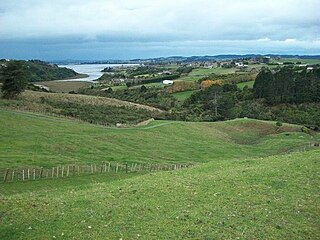
Litter is a global issue and has a significant human impact on the environment. Litter is especially hazardous because it can enter ecosystems and harm a country's biodiversity. Litter is a prevalent environmental issue in New Zealand.
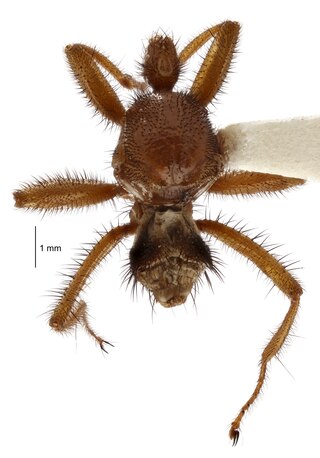
The New Zealand bat fly is a small, wingless insect which lives in a commensal relationship with the New Zealand lesser short-tailed bat. It is a true fly, in the order Diptera, placed in its own genus, Mystacinobia, and its own family, Mystacinobiidae. Although many other species of bat fly exist throughout the world, the New Zealand bat fly is endemic to the islands of New Zealand. It appears to be the only insect, parasitic or otherwise, which lives with these bats.

Jacobsoniidae are a family of tiny beetles belonging to Staphylinoidea. The larvae and adults live under bark, in plant litter, fungi, bat guano and rotten wood. There are around 28 described species in three genera:
Menegazzia neozelandica is a species of foliose lichen from New Zealand, Australia, and South America. It was first described by Austrian botanist Alexander Zahlbruckner in 1929 as Parmelia neozelandica. Peter James transferred it to the genus Menegazzia in 1992.

Aoraia enysii, also known as the forest ghost moth is a species of moth of the family Hepialidae. It is endemic to New Zealand. This is the only species of the genus Aoraia that can be found in the North as well as the South Island. This species can be found from Mount Te Aroha southwards. This species was described by Arthur Gardiner Butler in 1877 from a specimen obtained in the North Island by J. D. Enys.

Dumbletonius characterifer is a species of moth of the family Hepialidae. It is endemic to New Zealand. It was first described by Francis Walker in 1865.
Sapromyza brachysoma is a species of fly in the family Lauxaniidae.
Sapromyza rotundicornis is a species of fly in the family Lauxaniidae.
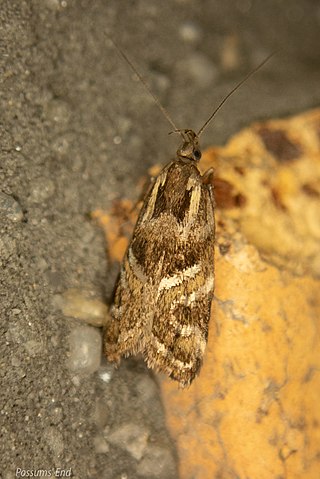
Hierodoris s-fractum is a moth of the family Oecophoridae. It is endemic to New Zealand and can be found only in the southern parts of the South Island. The male is larger than the female. This species is very similar in appearance to H. eletrica however H. s-fractum has an interrupted silver S-mark on the forewing and longer labial palps. The larvae has not yet been described. Hoare hypothesised that the larvae of this species likely feeds on leaf-litter. The species seems to prefer open dry areas and can be found in native shrub and gorse.
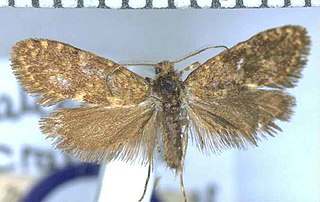
Mallobathra is a genus of moths belonging to the family Psychidae, and are bagworm moths. This genus was first described by Edward Meyrick. It is endemic to New Zealand. The type species of this genus is Mallobathra crataea.
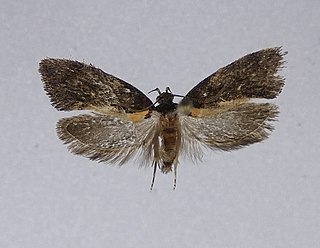
Tingena basella is a species of moth in the family Oecophoridae. It is endemic to New Zealand and has been found in both the North and South Islands. The preferred habitat of this species is scrubland or light forest. Eggs are deposited either singly or in egg masses. The larvae are littler leaf feeders. The adults of this species are on the wing from October through to the middle of December. George Hudson stated that he had collected numerous specimens of both sexes amongst the flowers of Brachyglotis repanda.
Pseudopomyza is a genus of flies in the family Pseudopomyzidae.
Degelia neozelandica is a species of foliose lichen in the genus Degelia.













